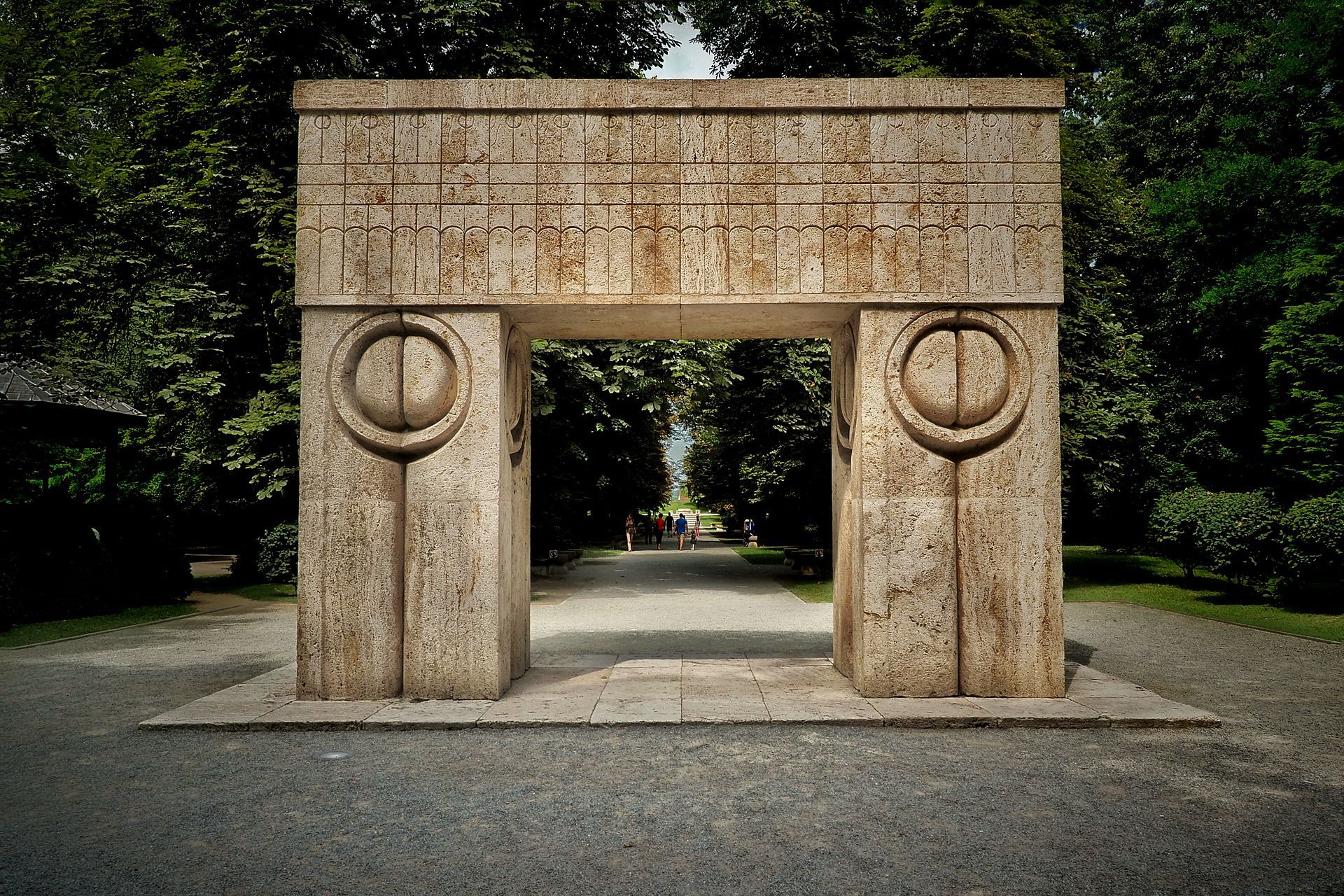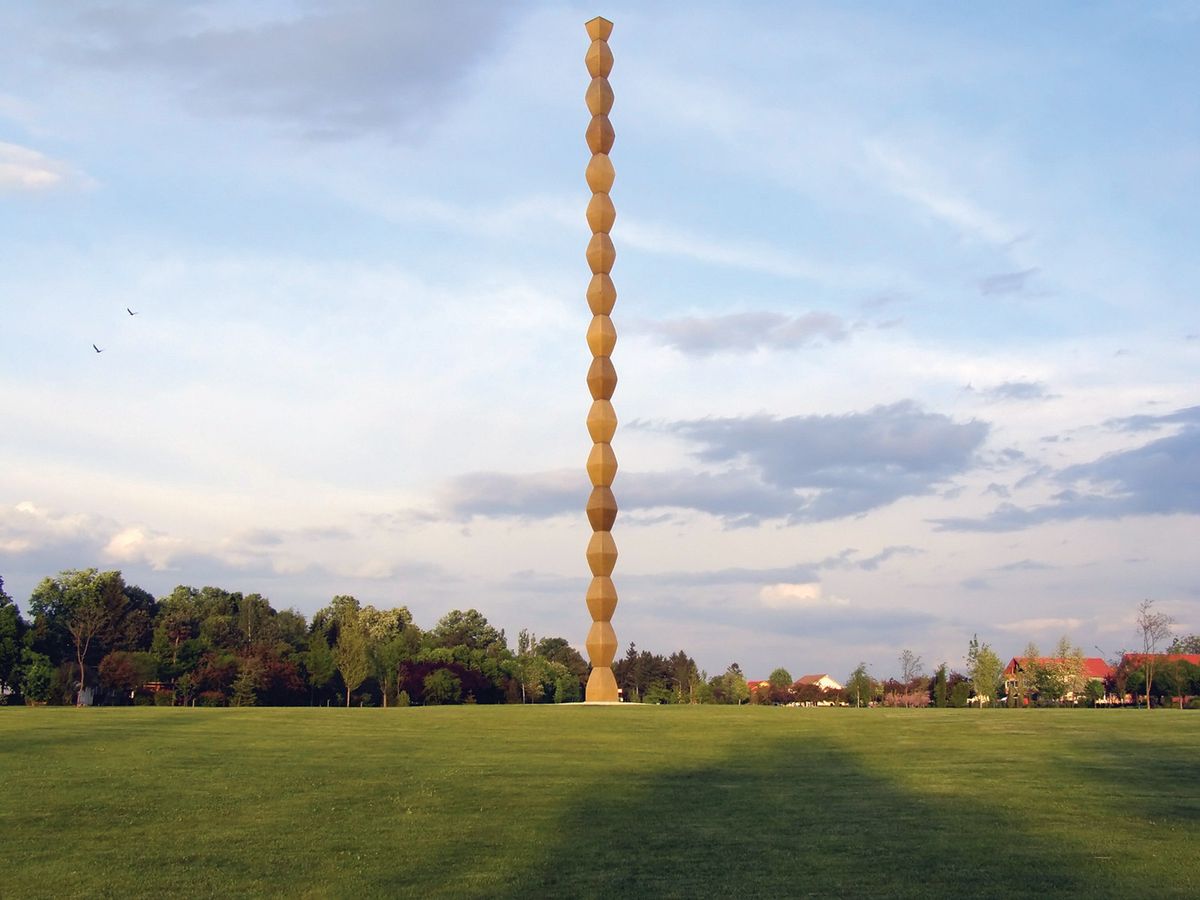A fight to take the copyright of the sculptor Constantin Brancusi into the public domain is likely to be heard in a Romanian court after a local politician has backed the campaign.
Brancusi grew up a few miles from the south-western Romanian city of Targu Jiu, which is home to an ensemble of three works that he was commissioned to create in 1936 to commemorate Romanian soldiers who had died in the First World War. Regarded as some of the finest works of 20th-century public sculpture, they include the 29.3m-high Endless Column (1938) and have made Targu Jiu a pilgrimage site for the artist’s fans.
But local authorities have long objected to what they perceive to be restrictive copyright laws that deny them the right to reproduce images of Brancusi’s work, including the city’s sculpture ensemble.
Now, a campaign led by the local politician and activist Iulian Popescu hopes to wrest control from the owner of the copyright.
Renounced citizenship
Brancusi died in Paris in 1957, five years after renouncing his citizenship when the Romanian state rejected his donation of his work. With no recognised heirs, he left his collection to his artist friends Alexandre Istrati and Natalia Dumitrescu, which upon Dumitrescu’s death in 1997 was transferred to their nephew, Theodor Nicol, who now controls the copyright. Nicol is represented by the Paris-based artist’s collective rights management organisation, ADAGP.
Under a 1996 EU law, applied retroactively to all artists whose copyright had not yet run out, Brancusi’s copyright is controlled by his heirs for 70 years following his death and will not come into the public domain until 2028, a document shared by ADAGP states.
Popescu’s case hinges on the fact that, at the time of Brancusi’s passing, copyright laws in Romania extended to just 15 years after death and so ran out in 1973.

Gate of the Kiss (1938) by Brancusi also stands in Targu Jiu
Visarta, a sister organisation of ADAGP in Romania, counters that the legislation in force in the country at the time of Brancusi’s death “cannot be applied in the case of C. Brancusi, who, from 1952, was a French citizen”.
“Although Romania acceded to the European Union in 2007, the legislator also took into account the provisions of [the EU’s 1996 law, including] the existence of the protection period of 70 years, calculated from 1 January of the year following the one when the death of the author occurred,” the document adds.
But a 2004 amendment to this law might throw this into question. It states that the extended length of copyright is only applicable if “the protection terms have not expired”, meaning that Brancusi’s work was in the public domain well before Romania joined the EU.
"For years, authorities have been granted rights that they did not have"Iulian Popescu
Furthermore, Popescu points out that in the case of architectural works or those with a fixed location, such as the Targu Jiu ensemble, according to the Berne Convention, national legislation applies, so even if the will and other documents were made in France or another country, Romanian law is applicable.

Politician Iulian Popescu plans to take Brancusi's heir to court
Popescu claims that the citizens of Targu Jiu have lost out on “millions” in tourist merchandise and other Brancusi-themed ventures. Visarta’s withholding of rights also obstructs the production of informative leaflets and limits scholarship efforts—for example, denying images of the Targu Jiu sculptures to be printed in books or featured in movies. He adds that it is “unfair” that local councils must pay for the upkeep of the sculptures but are unable to fully reap the rewards of the works.
Prominent Brancusi experts, such as Pavel Suvara and Doru Strambulesc from the Brancusi Research and Documentation Centre in Targu Jiu, have welcomed Popescu's action. But others, such as Doina Lemny, researcher at the Pompidou Centre and Brancusi expert say "there is no doubt" about the legality of Nicol's claim.
“I have consulted lawyers and specialists in the field who made the thread of events regarding this copyright, and it follows that for years, authorities have been granted rights that they did not have,” Popescu says. He plans to take the case to court within the next few months.
He is undeterred by the results of a court case in 2002, when Visarta successfully sued Targu Jiu City Hall, the Constantin Brancusi Culture and Art Center and the advertising agency McCann Erikson for using images of Brancusi’s Endless Column in a soft drink commercial.
"I refuse to wait another 7 years for something to which my community has been entitled since 1973!"Iulian Popescu
Visarta president Irina Florescu says: “There is a clearly written legal procedure here. But apparently, not all users want to follow the letter of the law. You can’t make a mockery of his oeuvre by producing kitsch.”
But Popescu, who dismisses the current laws as "urban legend", says he will not "bow his head" to Visarta's legal team. "I refuse to wait another 7 years for something to which my community has been entitled since 1973!"


